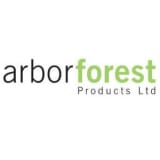This informal CPD article ‘Why creating a high-quality deck means asking the right questions’ was provided by Arbor Forest Products, one of the largest independent timber importing businesses in the UK, providing outstanding service and distribution to merchants.
The composite decking market has grown exponentially in the past five to 10 years, with designers, landscapers, and contractors increasingly appreciating its value. It’s easy to see why: composite decking can elevate any outdoor space, and is available in a vast range of colours and styles, so can act as an eye-catching feature in its own right.
However, with such a proliferation of products on the market, it can be tricky for time-poor specifiers and contractors to discern which products are offering value for money, and which are cheap and not-so-cheerful.
In particular, many commercial spaces and residential projects quickly caught onto the need for additional outdoor space during the covid-19 outbreak, with some making less well-informed decisions about the products they used. That has resulted in issues further down the line, with some of these lower-quality decks now showing wear just a few short months later, from fading colours to cracking veneers. This means that some recently installed decks are sadly already looking tired, leaving restaurants, cafes, and homeowners looking to refit their decks and make a more considered decision about the products they use this time around.
Fortunately, there are some simple questions to ask that can allow specifiers to ensure they are investing in a deck that is built to last, and will look just as strikingly beautiful after 10 years underfoot as it does on the day it is installed.
What’s in the core?
While we tend to associate composite decking with beautiful aesthetics, it’s what’s beneath the surface counts for a great deal. Not all composite decking achieves the same standard when it comes to the core, making this an essential detail to check when selecting the right product for your project.
In particular, it’s important to select a product with a solid core, as this will mean your deck is robust and stable for many years to come. Hollow boards are liable to considerable levels of expansion and contraction during hot summers and cold winters, and can also incur water ingress into their hollows causing freeze-thaw expansion, and leading to the boards breaking apart.
However, fully-capped solid-core boards are also not recommended: having a partially capped decking board, ideally capped on three sides, will allow the core to ‘breathe’ so the boards won’t warp or split as they expand and contract in changing temperatures.
Have you checked the small print?
A key indicator of the quality of decking products is the warranty. As composite decking is supposed to offer more longevity than timber boards, any reliable decking brand should be backed by a significant warranty. The very best composite decking products will provide a warranty of at least 25 years for domestic homeowner applications, and will guarantee the products against fading, staining, and scratching – when properly maintained, of course.
It’s worth spending some time checking the warranty conditions of any decking you choose to install, in order to save yourself a potential headache further down the line. While decking with a longer and more comprehensive warranty may carry a slightly higher price tag, the initial outlay will be worthwhile for the increased protection offered, and you can enjoy peace of mind knowing that the project will stand the test of time.
There is also a wealth of information available on manufacturer and distributor websites, and on social media, where you can find everything from installation guides to detailed product specifications, which makes it easy to do your own research into a product before you start a decking design.
Are you working with a trusted partner?
This question refers to the product manufacturer or distributor, the merchant, and the contractor who will actually fit the deck. Your own research should have led you to a high-quality product that won’t let you down – and the next step is ensuring that your supplier and installer can be relied on too, whether you’re buying direct from the distributor or via a third party merchant.
By working with a trusted contractor or installer, you can effectively kill two birds with one stone. A good decking installer should be able to advise on the products available, and have a fruitful and mutually reliable partnership with a local supplier so that you receive the product you need on time and in full. Working with an installer whose work and opinion you can trust can remove a lot of potential headaches when approaching a decking project. The best decking brands will often have a verified installer scheme.
By educating yourself on the good and the bad of the decking market, and working with partners who share your passion and vision, you can ensure that your decking project is an outstanding success.
We hope this article was helpful. For more information from Arbor Forest Products, please visit their CPD Member Directory page. Alternatively, you can go to the CPD Industry Hubs for more articles, courses and events relevant to your Continuing Professional Development requirements.













